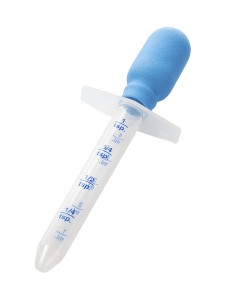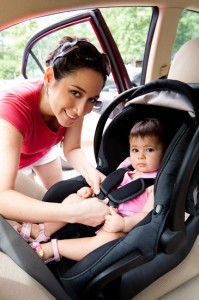Dosing Guide
Guide to Your Child’s Medicines from Healthy Children on Vimeo.
 This Dosing Guide gives dosages for common over-the-counter medications used in children. These medications are dosed according to weight. To calculate your child’s dose therefore, look up his weight on the Dosing Guide and read across to the proper dose for each medicine listed. If you don’t know your child’s weight and if your child is too young to stand on bathroom scales, a simple way to determine his weight is to first weigh both you and your child as you hold him. Then weigh yourself alone. Subtracting these two numbers will give you a fairly accurate weight of your child. 1 killogram ≈ 2.2 pounds.
This Dosing Guide gives dosages for common over-the-counter medications used in children. These medications are dosed according to weight. To calculate your child’s dose therefore, look up his weight on the Dosing Guide and read across to the proper dose for each medicine listed. If you don’t know your child’s weight and if your child is too young to stand on bathroom scales, a simple way to determine his weight is to first weigh both you and your child as you hold him. Then weigh yourself alone. Subtracting these two numbers will give you a fairly accurate weight of your child. 1 killogram ≈ 2.2 pounds.
Please use an appropriate measuring device for your child’s medication. A kitchen spoon may not be accurate. If you do not have a measuring dropper or other dispenser, please ask your pharmacy to aid in your selection.
Dosing for Common Medications
Abbreviations
| Abbreviation | Measurement/Term |
|---|---|
| mg | Milligram |
| Tsp | Teaspoon |
| Tbsp | Tablespoon |
| mL | milliliter |
| cc | Cubic Centimeter |
| dppr | Dropper full |
| oz | Ounce |
| prn | As Needed |
Conversions
| 1cc | = | 1mL |
| 5mL | = | 1 Teaspoon |
| 5cc | = | 1 Teaspoon |
| 15mL | = | 1 Tablespoon |
| 3 tsp | = | 1 Tablespoon |
| 1 oz | = | 2 Tablespoons |
| 1 oz | = | 30 mL |
Read More
Cooking with Kids
The kitchen can be a fascinating place for young children. They see grown-ups working briskly in there, watch the steam rise from pots on the stove, and smell what’s on the menu that night. Even older kids might be intrigued by how baked goods and meals come together. It isn’t always convenient to invite them into the kitchen to help, but consider doing so when time allows.
[framed_box bgColor=”#dddddd” textColor=”#444444″]Full article on kidshealth.org.[/framed_box]
Read MoreYoung Infant Saftey
- Small objects, baby powder and cleansers should be kept away from the baby so that he/she may not swallow these materials.
- Small toys should be checked closely for the possibility of breakage and small loose parts that can be pulled off and swallowed.
- The purchase of an infant walker is generally discouraged because of the risk of injury. If one is purchased anyway, constant supervision is recommended especially around stairs. The use of an infant walker will not help your child walk alone at an earlier age.
- It is important to check your home for possible physical hazards such as balconies, stairs, fireplace hearths and sharp table edges. The child should be protected from these hazards by gates and padding as appropriate. Expandable gates should be checked for appropriate spacing due to the risk of strangulation.
- A “crawling tour” of your home is recommended, looking for possible hazards that your infant can get into. Electrical outlets should have plugs placed; cabinet doors should have locks. Poisons, cleaning products, furniture polish and other toxic materials should be placed well out of the reach of an infant. Other possible hazards should be identified and secured.
- Infants should be protected from the possibility of drowning in a swimming pool.
- In addition, an infant should never be left alone in the bathtub.
- A playpen is suggested to be used as an “island of safety”; but, like the crib, safety precautions should be taken to avoid choking, strangling and suffocating hazards.
Newborn Safety
Newborn Car Safety Restraint
 When your child leaves the hospital, his or her first ride must be a safe ride in a car seat. The car seat must be set in the rear facing position. A rear facing car seat must not be in a seat where the air bag may deploy.
When your child leaves the hospital, his or her first ride must be a safe ride in a car seat. The car seat must be set in the rear facing position. A rear facing car seat must not be in a seat where the air bag may deploy.
By the time a child is one year old, weighs 20 pounds and is sitting well unsupported, the car seat may be faced forward.
According to the Arkansas Child Passenger Protection Act, which was approved February 28, 2001, a child should remain restrained in a child passenger safety seat until the child is approximately 60 pounds or about six years of age, then a safety belt is sufficient to meet the requirements of the law.
A rear facing car seat must not be in a seat where the air bag may deploy. This is very dangerous.
Crib Safety
Crib side rails should always be kept up when the infant is unattended. Crib bumpers are recommended. The distance between crib slats should be less than 2-3/8 inches. You should avoid toys and mobiles with long strings, cradle gyms that are not securely suspended and small objects in the crib. Do not place crib near a window with blinds.
Newborn Accident Prevention
- Never leave your infant alone with young siblings or pets.
- Your water heater thermostat should be set at 120 degrees Fahrenheit or less. This is a little below the normal setting.
- Never leave your infant alone on a bed or other surface from which he/she may roll off.
- Never leave your infant alone in a house or in a car unattended.
- Do not shake or jiggle your baby’s head vigorously.
- Infant jewelry such as earrings, necklaces, rings or other types of jewelry are not recommended.
- Do not drink hot liquids or smoke cigarettes while holding your child because you could burn your child.
- Do not use an infant feeder to feed your child baby food or semi-solid food because of the risk of choking and aspiration of food into the trachea.
- All infants should sleep on their back or side to lessen the risk of Sudden Infant Death Syndrome (SIDS).
Dream On Me Recalls Infant Swings Due to Strangulation Hazard
WASHINGTON, D.C. – The U.S. Consumer Product Safety Commission, in cooperation with the firm named below, today announced a voluntary recall of the following consumer product. Consumers should stop using recalled products immediately unless otherwise instructed. It is illegal to resell or attempt to resell a recalled consumer product.
Name of Product: Happy Swing II infant swings
Units: About 560
Importer: Dream On Me Inc., of South Plainfield, N.J.
Hazard: The opening between the tray and seat or the grab bar and seat can allow a child’s body to pass through and become entrapped at the neck, posing a strangulation hazard to young children if the belt is not engaged.
Incidents/Injuries: None reported.
Description: The Happy Swing II is a fabric infant swing that comes in red and green with a tray and grab bar attachment. The model/style number included in the recall is “432” which is printed on a label on the frame of the swing. The fabric swing sits on a triangular frame and is battery operated.
Sold at: Juvenile products stores and CSN stores nationwide and online at Wayfair and Amazon.com from October 2010 through September 2012 for between about $80 and $130.
Manufactured in: China
Remedy: Consumers should stop using the recalled infant swings immediately and contact Dream On Me for a replacement product. Consumers will have a choice between a free replacement swing or a Melody Musical baby walker.
Consumer Contact: For additional information, contact Dream On Me toll-free at (877) 201-4317 between 9 a.m. and 5 p.m. ET Monday through Friday, or visit the firm’s website at www.dreamonme.com
Read MoreInfant/Child Product Recalls
[av_codeblock wrapper_element=” wrapper_element_attributes=”]
[/av_codeblock]

![Newborn Safety Newborn Car Safety Restraint When your child leaves the hospital, his or her first ride must be a safe ride in a car seat. The car seat must be set […]](https://jbrkids.com/wp-content/uploads/2012/10/infant-car-seat.jpg)